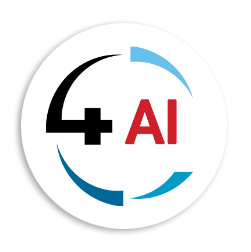Blog
How Microsoft Fabric Is Transforming AI Model Development and Data-Driven Solutions

Artificial intelligence (AI) is only as powerful as the data that fuels it. The challenge many organizations face isn’t just acquiring data — it’s turning that data into something useful. Siloed systems, complex pipelines, and lack of collaboration often get in the way of progress. That’s where Microsoft Fabric steps in. Designed as a unified data and analytics platform, Fabric brings together everything you need to transform raw data into machine learning models, dashboards, and business insights — all in one place.
Microsoft Fabric simplifies how businesses work with data and AI by combining data integration, engineering, science, and visualization in a single environment. This blog breaks down how Fabric enables the modern data lifecycle — from ingestion to model training and real-time decision-making — and why it's becoming essential for companies serious about AI.
Microsoft Fabric: A Unified Platform for Modern Data Needs
Microsoft Fabric isn’t just another tool — it’s an integrated platform that streamlines the entire data workflow. Whether you're a data engineer, analyst, scientist, or business user, Fabric offers an environment tailored to your role.
At its core, Microsoft Fabric merges services like Data Factory, Data Engineering (powered by Apache Spark), Data Science (with MLflow), Real-Time Analytics, Data Warehousing, and Power BI into a single software-as-a-service (SaaS) experience.
With native support for hybrid and multi-cloud environments, Fabric works whether your data lives in Azure, on-premises, or in other public clouds. That flexibility ensures businesses can access and act on their data — no matter where it resides.
Key Features of Microsoft Fabric:
- OneLake: A single, logical data lake for your entire organization.
- Synapse-powered experiences: Data Factory, Data Engineering, and Real-Time Intelligence are built-in.
- Power BI integration: For intuitive, real-time analytics and dashboards.
- Azure ML and MLflow: For scalable, trackable AI model development.
- Data governance: Integrated Microsoft Purview support for lineage, classification, and access control.
Smarter Data Integration and Preparation
AI success begins with high-quality, well-prepared data. Microsoft Fabric makes it easier to connect, clean, and transform data from various sources — including SQL Server, Dynamics 365, Salesforce, SAP, and flat files — without the traditional complexity.
Power Query and Dataflows
Fabric leverages Power Query, a low-code data transformation tool familiar to many Power BI users. It allows business analysts and data engineers to build complex transformation pipelines using a graphical interface — no coding required.
Spark for Advanced Data Engineering
For big data workloads, Fabric provides a fully managed Apache Spark runtime, enabling distributed processing on large-scale datasets. This is particularly important for training deep learning models, which often require massive volumes of structured and unstructured data.
Data Virtualization
Fabric supports data virtualization, allowing users to query data without physically moving it. This helps organizations avoid data duplication, save storage costs, and provide near real-time data availability for downstream analytics and model training.
By streamlining the preparation phase, Fabric frees up data scientists to focus on what they do best — building and refining models.
AI and Machine Learning with Azure ML and MLflow
Microsoft Fabric directly integrates with Azure Machine Learning, making it easier to develop, train, and deploy machine learning models using the data already living in OneLake. Whether you're running traditional regression models or training deep neural networks, the tools are already built into the platform.
AutoML and Responsible AI
Fabric supports Azure AutoML, which automates key parts of the model-building process: algorithm selection, hyperparameter tuning, and validation. This reduces the barrier to entry for business analysts and junior data scientists, while still allowing expert users to fine-tune performance.
Microsoft also integrates Responsible AI principles into the workflow, helping users understand how models make decisions through built-in explainability tools, fairness metrics, and monitoring.
MLflow and Model Tracking
Fabric includes support for MLflow, a popular open-source framework for managing the machine learning lifecycle. With MLflow, teams can:
- Track experiments and compare model versions.
- Log parameters and performance metrics.
- Package models for reproducibility.
- Register and deploy models to endpoints with version control.
This robust model management makes Microsoft Fabric suitable for enterprise-scale AI deployments.
Real-Time Insights with Power BI Integration
All the data processing and model training in the world means little if the results aren't actionable. Fabric's tight integration with Power BI bridges that gap, turning AI outputs into business-ready dashboards and real-time visualizations.
AutoML in Power BI
Users can also create machine learning models directly within Power BI using AutoML — no switching tools required. For instance, a marketing analyst can predict customer churn directly from a dataset in Power BI, publish the model, and build a report on the results in the same interface.
Always-Fresh Data
With real-time connections to the Fabric data pipeline, Power BI reports are always updated. This means decision-makers can act on live data — whether it’s identifying fraudulent transactions, optimizing supply chains, or customizing product recommendations.
Secure Collaboration and Governance at Scale
Building AI solutions requires cross-functional collaboration — and careful governance. Microsoft Fabric is built with both in mind.
Role-Based Access Control
With built-in role-based access controls (RBAC) and data masking, organizations can confidently give teams access to only the data they need — whether that’s IT, data science, or business operations.
Microsoft Purview Integration
Fabric is integrated with Microsoft Purview, a unified data governance platform that ensures compliance and traceability. With features like:
- Data lineage tracking
- Classification
- Data cataloging
Teams can maintain trust and quality across the entire data lifecycle.
Performance and Cost Efficiency
AI can be resource-intensive — but Microsoft Fabric helps control costs through:
- Elastic compute and storage: Resources scale automatically based on workload.
- Pay-as-you-go pricing: You only pay for what you use.
- Resource consolidation: One platform means fewer tools to manage, maintain, and pay for.
For large enterprises, Fabric also supports capacity reservations and multi-tenant environments, making it scalable and cost-effective whether you're supporting a single department or an entire global organization.
Microsoft Fabric in Action
A global retail company using Microsoft Fabric could:
- Ingest product and sales data from hundreds of stores into OneLake.
- Use Power Query to clean and unify the data.
- Train a demand forecasting model with Azure ML and MLflow.
- Visualize results and inventory recommendations in Power BI.
- Secure sensitive customer data using Microsoft Purview.
All within a single, connected ecosystem.
Microsoft Fabric is more than a toolkit — it’s a strategic platform for organizations looking to turn data into intelligence. By unifying data integration, machine learning, governance, and visualization, Fabric helps teams move faster, make better decisions, and scale AI solutions with confidence.
As businesses continue to adopt AI for competitive advantage, Microsoft Fabric positions itself as the platform to power the entire journey — from raw data to smart insights.
Want to learn how Microsoft Fabric can help your business? Reach out to your SureStep Ambassador at This email address is being protected from spambots. You need JavaScript enabled to view it. to schedule a personalized session.


